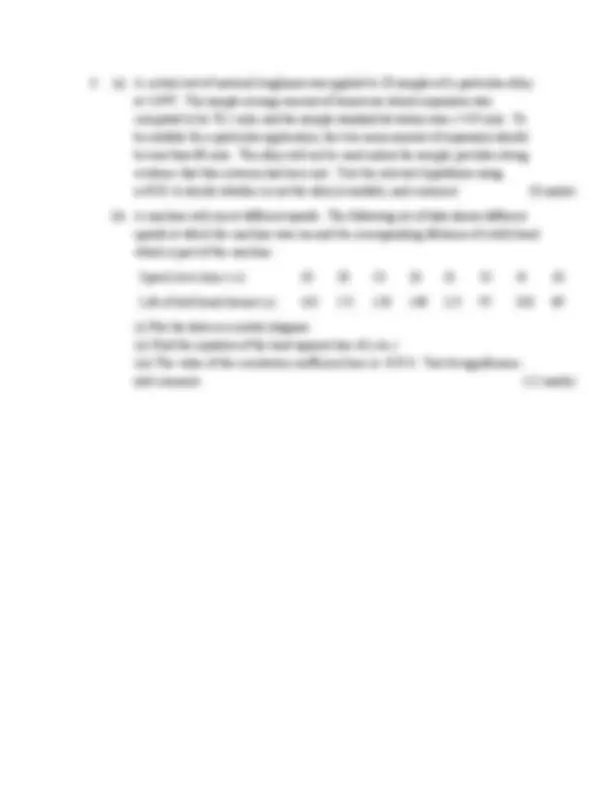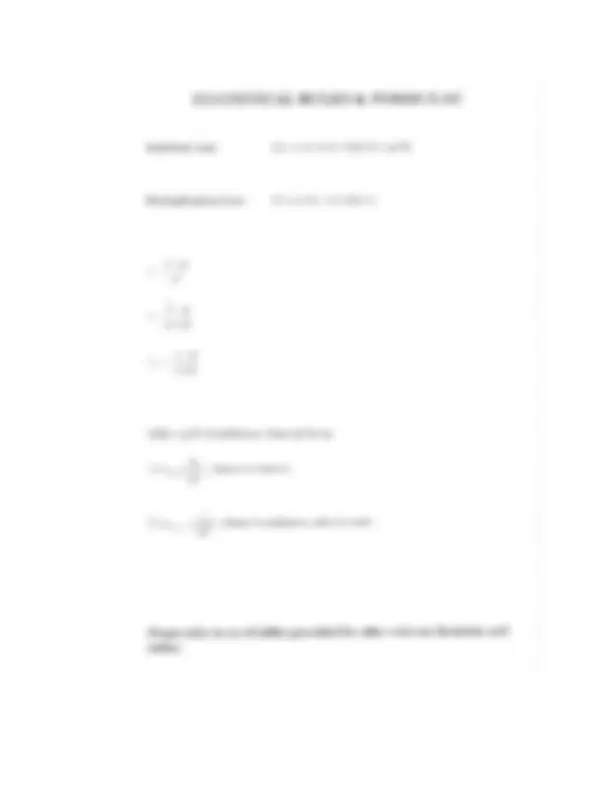




Study with the several resources on Docsity

Earn points by helping other students or get them with a premium plan


Prepare for your exams
Study with the several resources on Docsity

Earn points to download
Earn points by helping other students or get them with a premium plan
Community
Ask the community for help and clear up your study doubts
Discover the best universities in your country according to Docsity users
Free resources
Download our free guides on studying techniques, anxiety management strategies, and thesis advice from Docsity tutors
A past exam from the bachelor of science (honours) in advanced manufacturing technology and bachelor of science (honours) in process plant technology programs at cork institute of technology. The exam covers probability and statistics concepts, including calculating probabilities of events, determining independence of events, and analyzing data using statistical methods. Students were required to answer three questions within 1.5 hours, with statistical tables provided.
Typology: Exams
1 / 4

This page cannot be seen from the preview
Don't miss anything!



Bachelor of Science (Honours) in Advanced Manufacturing Technology Bachelor of Science (Honours) in Process Plant Technology
Answer three questions. All questions carry equal marks. Statistical tables are provided.
Examiners: Mr. D O’Hare
the total output. Of their respective outputs 5, 3 and 2 percent are defective. An item is chosen at random. (i) What is the probability that it is not defective? (ii) If it is found not to be defective, what is the probability that it was produced by machine C? (8 marks)
(b) P(A) = 0.4, P(B)=0.5 and P(A or B) = 0.8.
Show that A and B are not independent. (6 marks)
(c) An incoming lot of silicon wafers is to be inspected for defectives by an engineer in a microchip manufacturing plant. In a tray containing twenty wafers, assume that four are defective. Three wafers are to be randomly selected for inspection. Find the probability that (i) all three are non-defective; (ii) at least one of the three is non-defective. (6 marks)
(c) Specifications require that a product have certain quality characteristics, which can only be determined by a destructive test. The current inspection scheme is to select an initial sample of four items from each batch. If all four meet the quality specification, we accept the batch. If two or more fail, we reject the batch. If one fails, we take a further sample of two items. If both pass the inspection, we accept the batch, otherwise we reject. What is the probability that we accept a batch that is 5% defective? (6 marks)
(i) Calculate the sample mean and the sample standard deviation. (ii) Find a 99% confidence interval for the mean learning time. Find also a 99% lower confidence limit on this mean learning time. (10 marks)